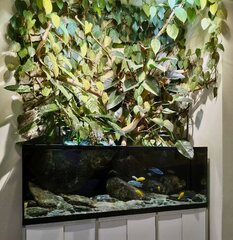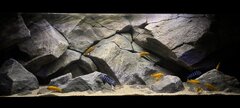Nowy Baniaczek Pomoc w obsadzie ..
-
Ostatnio przeglądający 0 użytkowników
- Brak zarejestrowanych użytkowników przeglądających tę stronę.
-
Posty
-
Przez Bojar · Opublikowano
Osad bakteryjny to nie jest problem. Kamień niestety tak. Wykręcasz pompę ze śrubunku i rozkręcasz korpus (cztery śruby) Patrzysz co w środku. Czyścisz np roztworem kwasku cytrynowego -
Przez projektex · Opublikowano
Szare PVC 32, klejone. Osad to taka zielonkawa breja, nie mam jej dużo ,jest tylko na ściankach, ale już w pompie gdyby gdzieś się zbierała to może by stanowiła problem? -
Przez yaro · Opublikowano
Nie zauważyłem w swoich rurach osadu, jakich rur użyłeś? -
Przez projektex · Opublikowano
Witam, Mam pytanie do użytkowników filtrów narurowych - czy po jakimś czasie użytkowania czyścicie pompę obiegową? Mam u siebie IBO beta2 25-60/180 , pracuje już 3 lata i mam wrażenie , że trochę zmniejszyła jej się jej wydajność, lub to może kwestia osadów w rurach i korpusach... -
Przez tom77 · Opublikowano
Ja zamawiałem komplet (zbiornik, tło, pokrywa z oświetleniem). Najpierw zostało włożone i zasilikonowane tło strukturalne, potem wklejono 2 wzmocnienia poprzeczne. Wcześniej (na samym początku) trzeba przyciąć tło na długości wzmocnienia podłużnego, by się pod nim zmieściło (na lekki wcisk). Mówimy oczywiście o typowym rozmiarze zbiornika i tła (w moim przypadku 200x60cm), wzmocnienie podłużne jest nieco poniżej górnej krawędzi tylniej szyby. W przypadku tła ze spienionego PCV i akwarium o szerokości większej od wysokości, spróbowałbym wsadzić tło wyginając je. Próba ta powinna być dokonana w miejscu, w którym w razie czego będzie można "odkleić" wzmocnienia, zamontować tło i ponownie wkleić wzmocnienia. Wszystko zależy od sztywności tła. Trzeba oczywiście pamiętać by uprzednio przyciąć wzdłużnie tło, by zmieściło się pod wzmocnieniem wzdłużnym. -
Przez Bojar · Opublikowano
Ja dałem radę ale wzmocnienie mam jedno pośrodku 170cm długie. Jest dosyć elastyczne no i przy wpychaniu nie rysuje szkła. Wystarczy 3mm. Efekt jest naprawdę fajny gdyż jest to pełny mat a w dodatku chroniący w przypadku osunięcia się kamieni. Ja kleiłem na wszelki wypadek chociaż dobrze docięty pod wzmocnienie da radę Z perspektywy czasu polecam -
Przez BaltazarGąbka · Opublikowano
Oglądając galerię podoba mi się tło że spienionego PCV Akwarium będzie miało długości 180, może 200 cm (resztą wymiarów 50x50), doczytałem że PCV jest dosyć sztywne Zbiornik będzie miał jedno lub dwa wzmocnienia poprzeczne, czy nie będzie problemów z włożeniem tła do akwarium? -
Przez Vrzechu · Opublikowano
Dzięki 🙂 Zamówię chyba w takim razie tam Aller Aqua Bronze. 45% białka to sporo jak porównuję to z innymi pokarmami, nawet z półki "premium". -
Przez triamond · Opublikowano
Nigdy nie namaczałem, chyba że na początku zbiornika lekami. -
Przez Vrzechu · Opublikowano
@triamonddzięki za Twoją opinię. Byłem ciekaw czy oprócz Aller Aqua Futura korzystałeś jeszcze z jakiegoś innego produktu od nich. Ja karmię ręcznie i staram się żeby raczej ryby pozostawały w lekkim niedosycie niż najedzeniu. Czy przy stosowaniu Aller Aqua Master również nie namaczałeś granulatu jak w przypadku Figury?
-
-
Tematy
-
Grafiki











Rekomendowane odpowiedzi
Jeśli chcesz dodać odpowiedź, zaloguj się lub zarejestruj nowe konto
Jedynie zarejestrowani użytkownicy mogą komentować zawartość tej strony.
Zarejestruj nowe konto
Załóż nowe konto. To bardzo proste!
Zarejestruj sięZaloguj się
Posiadasz już konto? Zaloguj się poniżej.
Zaloguj się